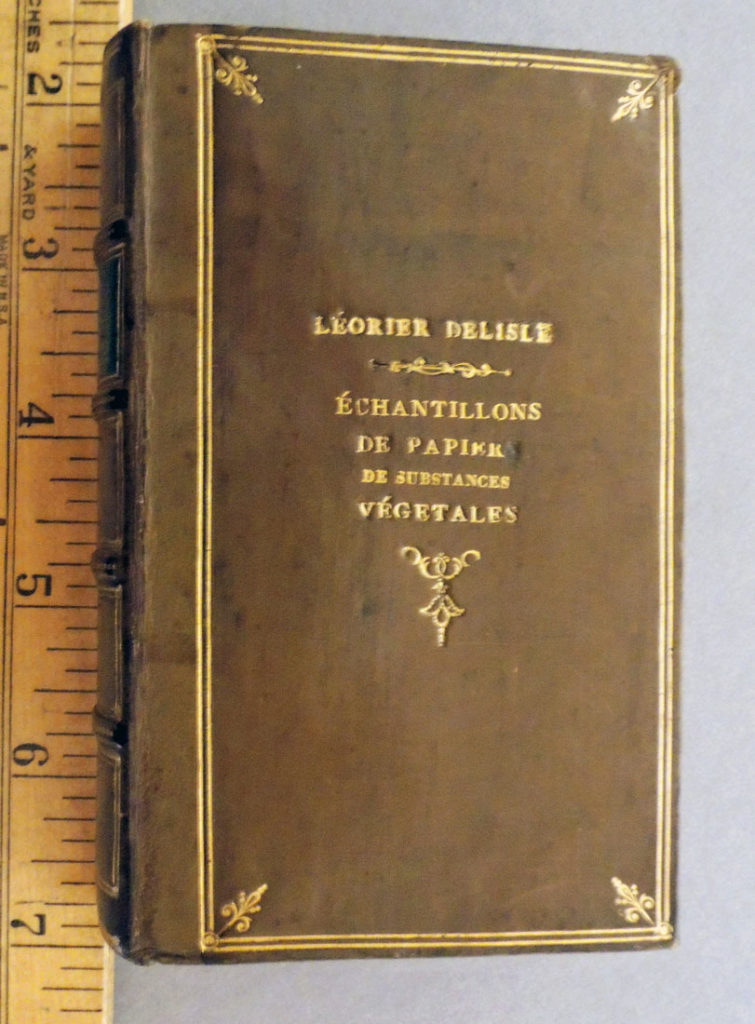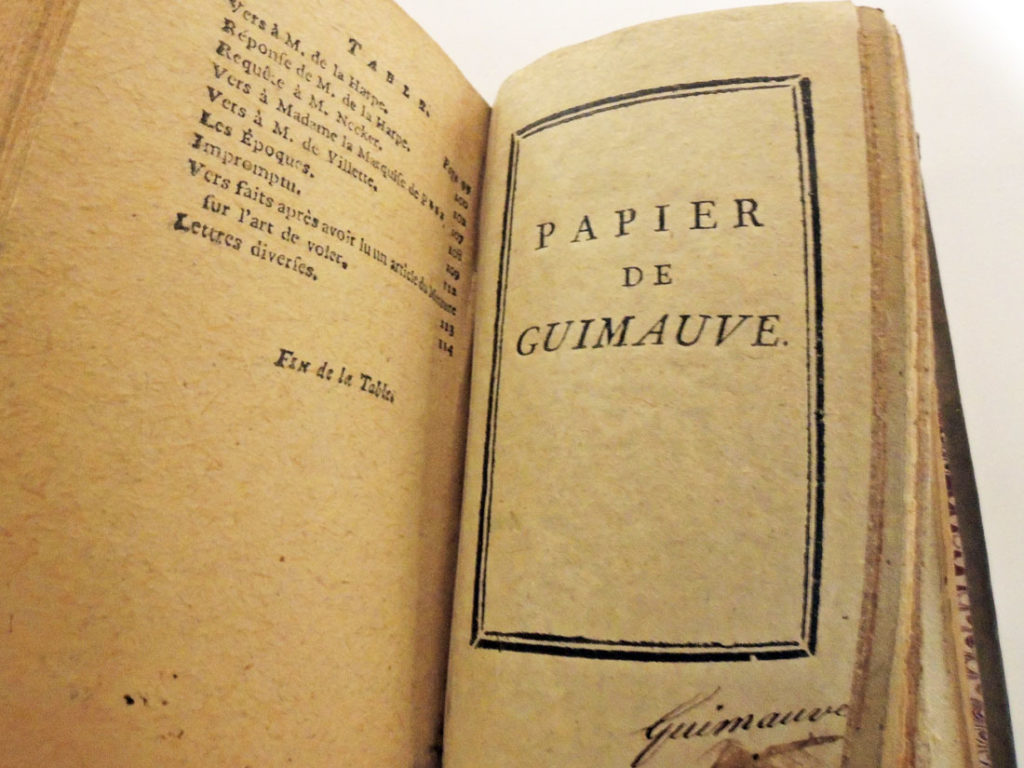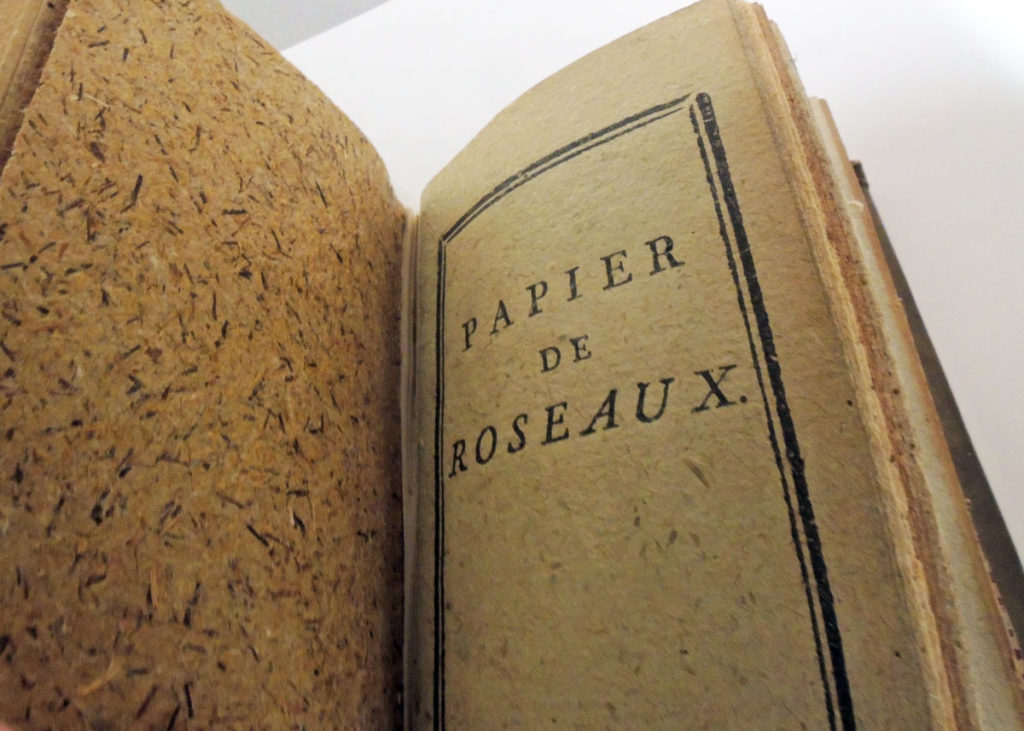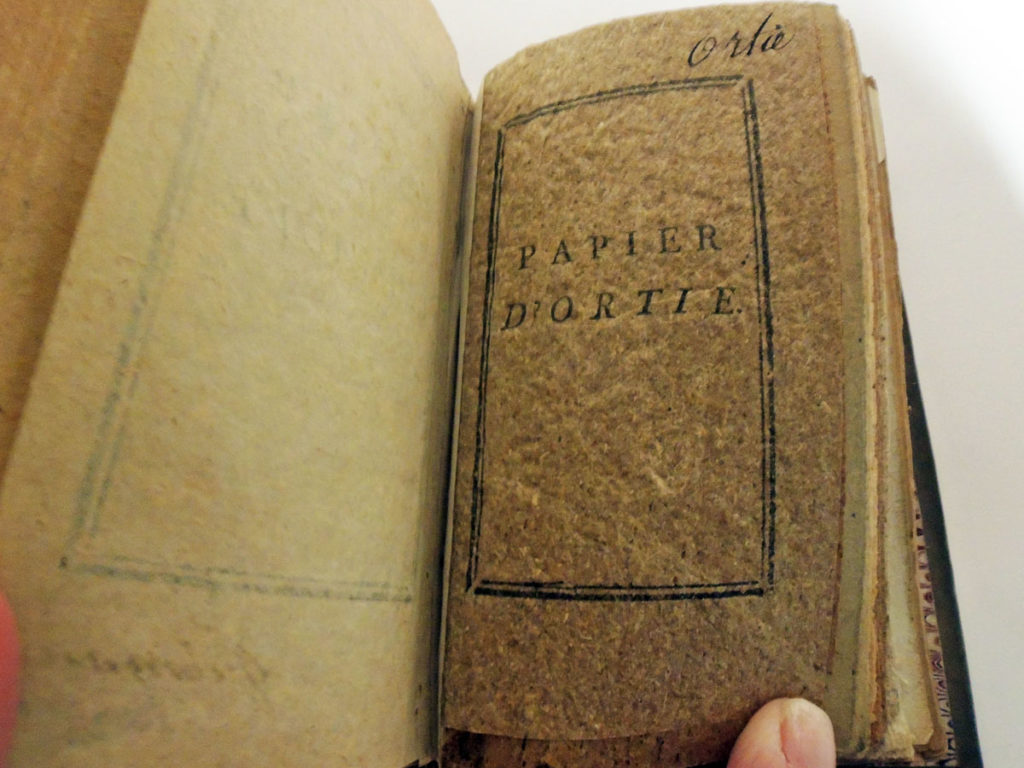 Charles-Michel, Marquis de Villette (1736-1793), Œuvres du marquis de Villette (Londres. [i.e. Langlée, France: P. A. Léorier Delisle], M. DCC. LXXXVI. [1786]). Together with 20 samples of leaves. From the printing collection of Elmer Adler. Graphic Arts Collection (GAX) 2004-0061S.
Charles-Michel, Marquis de Villette (1736-1793), Œuvres du marquis de Villette (Londres. [i.e. Langlée, France: P. A. Léorier Delisle], M. DCC. LXXXVI. [1786]). Together with 20 samples of leaves. From the printing collection of Elmer Adler. Graphic Arts Collection (GAX) 2004-0061S.
In 18th century Paris, there was a shortage of linen and cotton rags for making paper and so, Pierre Alexandre Léorier Delisle (1744-1826), director of the paper mill at Langlée, near Montargis, began experimenting with various vegetable materials. His tried marshmallow (plant) paper, nettle paper, as well as hops, moss, reeds, sponge, couch root, linden and willow bark, thistle leaves and more.
Charles-Michel Villette had his writings published by Léorier Delisle using his vegetable paper. A note on the verso of the half title page notes, “Ce volume est imprimé sur le papier d’écorce de tilleul” [This volume is printed on linden bark paper]. It was Leorier Delisle’s second attempt at using non-rag paper. Two years earlier, he published Les loisirs des bords du Loing, ou Recueil de pièces fugitives, poems by Marie-Joseph-Hippolyte Pelée de Varennes (1741-1794), not held by Princeton.
 At the back of each book, various paper samples are bound in. At the back of the Graphic Arts Collection copy are bound in twenty sample leaves, each one identified:
At the back of each book, various paper samples are bound in. At the back of the Graphic Arts Collection copy are bound in twenty sample leaves, each one identified:
papier de guimauve
papier d’ortie
papier de houblon
papier de mousse
papier de roseaux
papier de conferva (première / seconde / troisième espèce)
papier de racines
papier de chiendent
papier de bois de coudrier
papier de bois de fusain
papier d’écorce de fusain avec son épiderme ou croûte
papier d’écorce de chéne
papier d’écorce de peuplier
papier d’écorce d’osier
papier d’écorce d’orme
papier d’écorce de saule
papier de bardanne
papier de bardanne et de pas-d’ane
papier de chardons.





